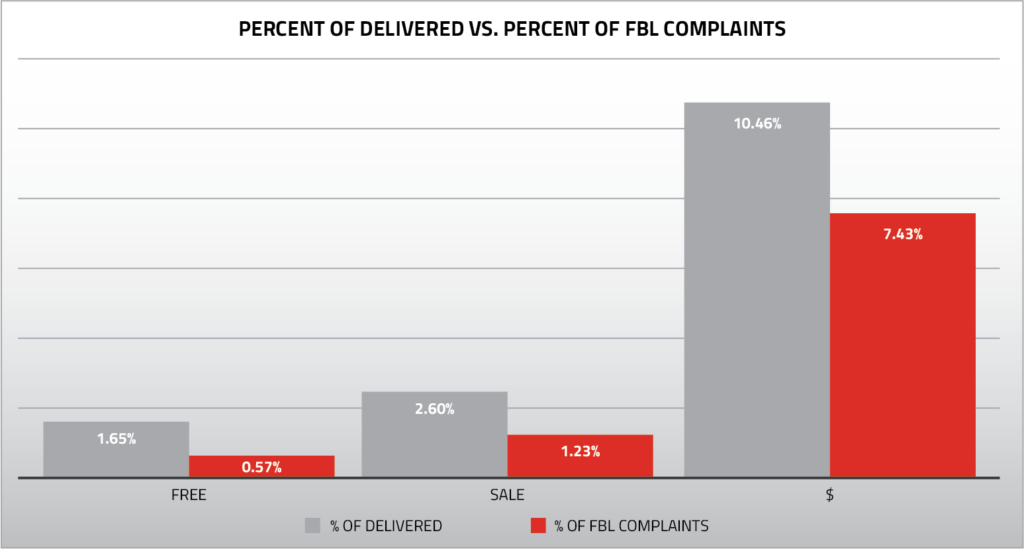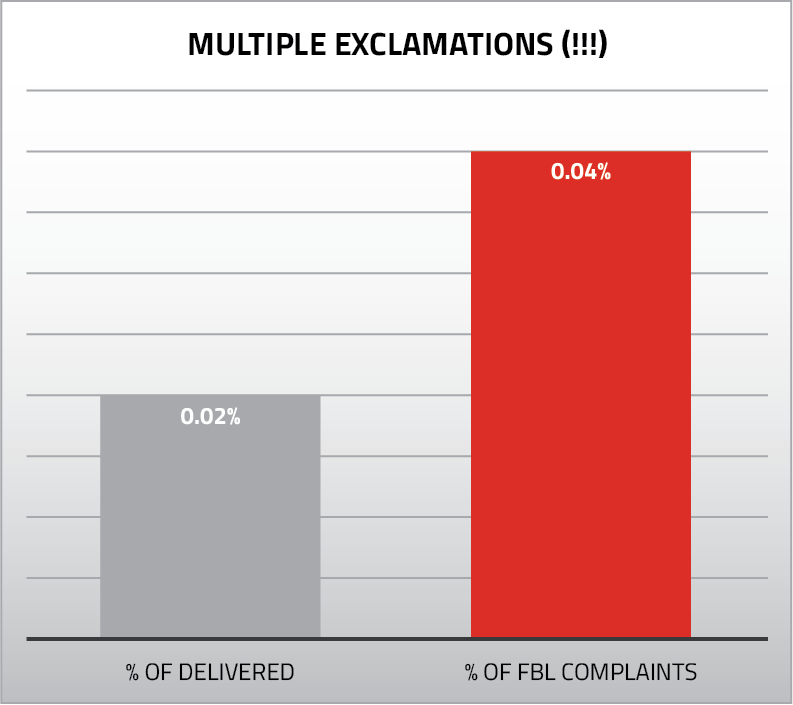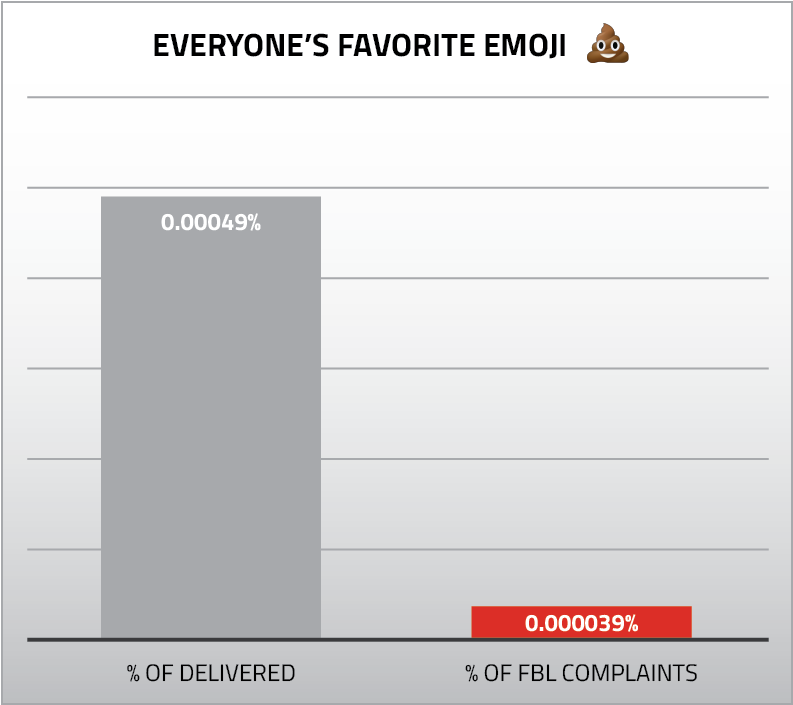In the early days of email, spam filters were all about the content. Including specific combinations of words and phrases would often make your message more likely to be flagged as spam or blocked outright. As mailbox providers and their spam filters evolved, sender reputation became more important as a factor: instead of a single message, providers evaluate a sender’s “body of work.” Senders whose messages often generate spam complaints or are ignored by recipients are now the most likely to end up in the dreaded spam folder. Message content still factors into many spam filters, but is almost always outweighed by IP or domain reputation.
Even so, many in the industry remain convinced certain words or phrases are the kiss of death for an email. You can find recent articles advising marketers to avoid including words like “free” in the subject line, along with symbols like dollar signs or exclamation points. It’s not hard for senders to get confused with the seemingly conflicting information out there, so we wanted to investigate how it all might tie together.
The Theory
Providers use reputation data to determine whether mail is routed to the spam folder, and one of the surest ways to get a bad reputation is to generate spam complaints. So it stands to reason that if your content generates more spam complaints, that content is more likely to put you in the spam folder. When we look at it this way, our focus becomes whether or not these “spam words” generate more complaints from recipients. We analyzed the subject lines of over 25 billion messages sent between April and September of 2019 (and over 2 million spam complaints) to find out.
The Data

We started with what is likely the most demonized word in all of email — “free.” During the test period, over 400 million (1.65%) of the emails delivered included that word in the subject line. However, these messages accounted for only 0.57% of the total spam complaints received. The conclusion? A decreased likelihood of spam complaints when “free” is included in the subject line.
For comparison, we next looked at “sale,” a word rarely mentioned in the spam word debate but one that is only a couple steps removed from “free.” Here, we saw over 650 million (2.6%) of the subject lines containing the word, but only 1.23% of the total spam complaints. Messages with “sale” — a seemingly safe word — were more likely to generate complaints than those with “free” in the subject line. However, these messages were around 50% less likely to generate complaints than messages without “sale” in the subject line.
We also wanted to evaluate some commonly cited symbols, starting with the dollar sign ($). Anecdotes since the beginning of email have admonished senders to stay away from this symbol, especially in subject lines — but they don’t seem to be listening. A whopping 2.6 billion messages (10.4%) included this symbol in the subject line, but these messages generated only 7.4% of the total complaints. Again, these messages remained less likely to generate complaints than those without $ in the subject line.
Speaking of symbols, we wanted to test some of the more gratuitous options as well. First, we took a look at subject lines that included 3 consecutive exclamation points (!!!). This would absolutely be a no-no by the “spam words” mentality, and it seems that’s for good reason.

Around 5.8 million emails (0.02%) contained 3 exclamation points in the subject line, and those messages generated 0.04% of the total complaints. Of the elements we tested, this is the only one shown to be more likely to generate spam complaints. Messages with !!! in the subject line were 2x more likely to generate complaints than those without.
Finally, we wanted to test a very popular emoji — we’ll call it the ‘chocolate froyo’ symbol (💩). I’ve personally received marketing email that included this emoji, and I’ve heard a few senders ask about it as well, but it’s still considered pretty risqué by most marketers. Our data from the past 6 months included zero emails with this emoji in the subject line, so I had to dig even deeper.

Working with a dataset of almost 32 billion emails, I was able to find just over 150,000 emails sent with this subject line — just under half of one-thousandth of a percent (0.00049% to be exact). Those messages generated exactly one spam complaint. That equates to 0.000039%. While this data would indicate a decreased likelihood of complaints from using 💩 in the subject line, my conclusion is that we need more data. Any volunteers?
The Truth
While popular sentiment might say otherwise, the data can’t be ignored: messages with “free,” “sale,” or a dollar sign in the subject line had less likelihood of generating spam complaints than messages that did not include those elements. So go ahead, add that $ to your subject line (but you may want to hold off on the multiple exclamation points). As long as you’re providing wanted, valuable emails, those “spam words” aren’t such a big deal.






